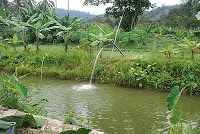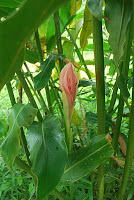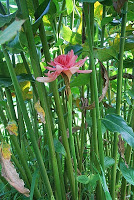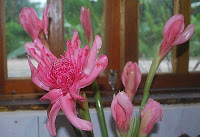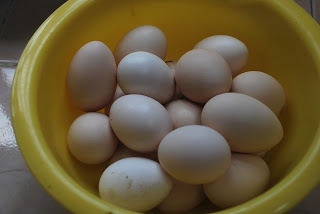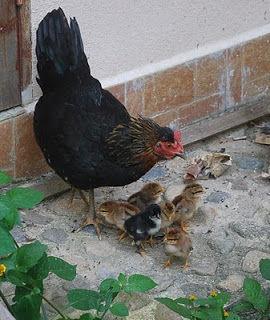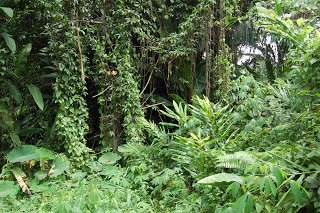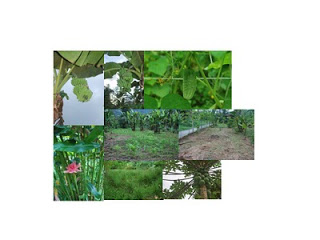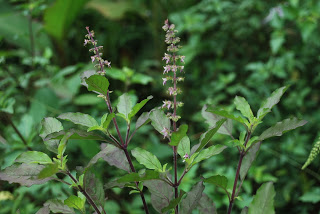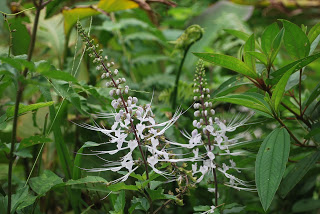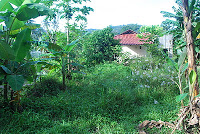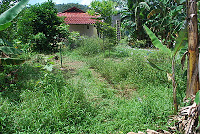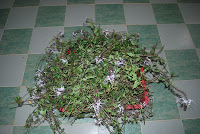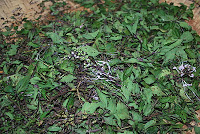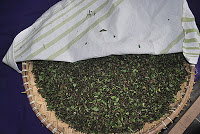Well-Being Landscape – Serai Wangi
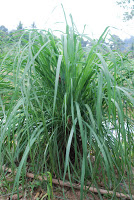 I love the aroma from Serai Wangi – the Malay name (English Name : Citronella Grass; Botanical Name : Cymbopogen Nardus). This plant serves many purposes including from being a condiment to used in the beauty industry to being a natural pesticide.
I love the aroma from Serai Wangi – the Malay name (English Name : Citronella Grass; Botanical Name : Cymbopogen Nardus). This plant serves many purposes including from being a condiment to used in the beauty industry to being a natural pesticide. 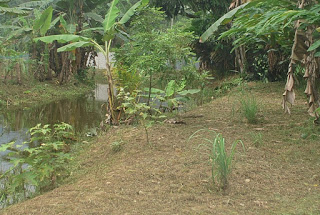 This plant can be easily propagated from stalks – be sure to choose healthy stalks and plant 2-3 stalks together. This plant can grow in almost any type of soil and is very hardy, tolerant of days of not watering. It also does not require much fertilization. Hence, if you want a plant that requires minimal care but yet serve as a mosquito repellent for your home, this plant is a great choice.
This plant can be easily propagated from stalks – be sure to choose healthy stalks and plant 2-3 stalks together. This plant can grow in almost any type of soil and is very hardy, tolerant of days of not watering. It also does not require much fertilization. Hence, if you want a plant that requires minimal care but yet serve as a mosquito repellent for your home, this plant is a great choice. At the farm, I plant it in many locations – around the pond to serve as a repellent for the memerang or river otters which loves to munch on my fish, around the house to serve as a mosquito repellent. My farm cats also periodically will munch on them and to date, they have all remained healthy, alhamdulillah. Another reason why I keep chemical pesticides and herbicides away from my farm.
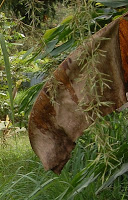 It can grow to about 2 m and has a red stalk base as opposed to the Serai (Lemon Grass) which has a white or creamy stalk base. The long leaves are also broader than Serai. A healthy plant will produce flowers in long stalks. At the farm, it took 3 months for the plants to mature and produce flowers. For ease of relocating the plant, you can also plant it in big planters, then you can move them around as you like. To encourage the stalks to grow thicker, trim the leaves every 3 months or so. You can harvest the stalks as needed with no visible impact to the plant. It can grow in bright sunlight as well as in semi-shady locations.
It can grow to about 2 m and has a red stalk base as opposed to the Serai (Lemon Grass) which has a white or creamy stalk base. The long leaves are also broader than Serai. A healthy plant will produce flowers in long stalks. At the farm, it took 3 months for the plants to mature and produce flowers. For ease of relocating the plant, you can also plant it in big planters, then you can move them around as you like. To encourage the stalks to grow thicker, trim the leaves every 3 months or so. You can harvest the stalks as needed with no visible impact to the plant. It can grow in bright sunlight as well as in semi-shady locations. 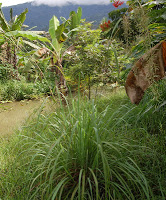 Since the edges of the leave are rather sharp, exercise care when handling or you may end-up with “paper cuts”. I have tried chopping the leaves and steaming them to release the aromatic properties and find that it also keeps the pesky insects away while leaving a nice aroma in the air. In aromatherapy, it is said to promote relaxation.
Since the edges of the leave are rather sharp, exercise care when handling or you may end-up with “paper cuts”. I have tried chopping the leaves and steaming them to release the aromatic properties and find that it also keeps the pesky insects away while leaving a nice aroma in the air. In aromatherapy, it is said to promote relaxation. The whole stalk, leaf and all, can also be blended and strained producing a juice that you can then spray around the house to control ants and also used as a natural pest repellent for plants. I find that it is really effective in controlling ants without the worry of whether it is toxic or not. Within the home, it can also help to repel cockroaches as well as mice. I have also taken warm baths with this juice mixed in the water. The serai wangi is often used in the bath mixture for women post-pregnancy.
Being a totally organic farm, I often experiment for pest repellant or deterrent for my vegetables. I find that it works well with the E.M. mixture that we produce on the farm, enhancing the mixture by adding the pest repellant properties without adding harmful toxins to the vegetables. I have tried it two ways: one by adding citronella juice to the E.M. mixture before spraying and another by creating the E.M. mixture with citronella as the key component. to date, it has worked well with all my plants without damaging the plants. I also add this to my mulch mix, especially to the mulch that I place around newly transplanted plants to help keep the pests away.
With its many uses and being non-toxic, it is great to use around the farm as I do not have to worry if it will impact any of the life forms. For normal home use, you only need to have one plant which can occupy a corner of you home and you can process it to serve the purpose you have in mind :).
Updated: 22 March 2015
Updates: 13 Sep. 2015

